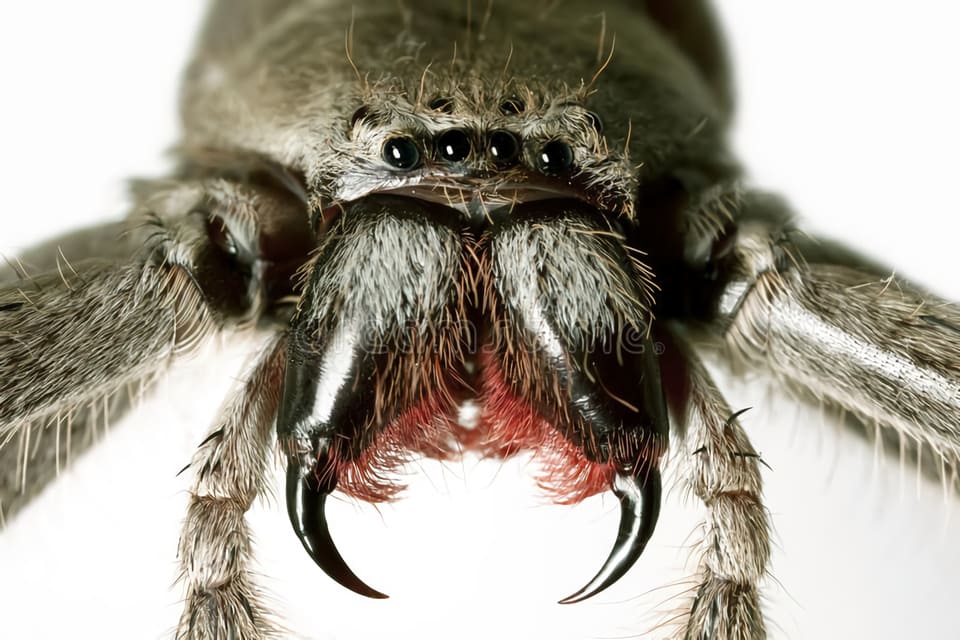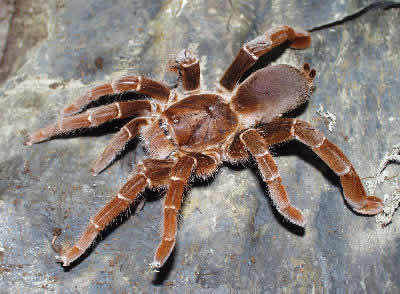 These are my top 15 recommend species for beginners!
These are my top 15 recommend species for beginners!
So if you are new to the hobby better consider my top 15 list.
before i made this list, what i considered is their Looks, Temperament, size and their Price
.
1. Chromatopelma cyaneopubescens (Greenbottle Blue Tarantula)
This terrestrial tarantula is a good start for beginners since Gbb
(Greenbottle Blue Tarantula)
one of the most beautiful tarantula of all, and much easier to take
care unlike other beautiful species like Balfouri and P. metallica are
both "wallet terminators." Gbb can be bought today at around P1,200 only
plus this guy over here has good appetite! feed it and he will eat it!.
Although when its still a sling (spider ling), its speed is a bit fast
so try to move slowly every time you handle this guy.
2. Grammostola rosea (Chilean Rose Hair Tarantula)
Grammostola
rosea or also known as "Chilean rose" are classic it is very docile and
calm that makes a good tarantula for beginners! Chilean rose tarantula
hates wet substrate and tends to avoid it. If their substrate is wet
they tend to hang up on their enclosures until it dries so better keep
your substrate dry! Aside from being docile and calm this tarantula is like Garfield - Loves to do nothing =)
3. Brachypelma smithi (Mexican Red Knee Tarantula)
Well
have
you seen this guy on Television? well i do! i saw this on a commercial
when a girl is screaming, so i thought "wow this is cool! i can scare my
sister!" so that's how i started in this hobby hehe =) aside from i saw
it on T.V this tarantula has good looks! right?? aside from that its a
bit cheap pricing , the only thing i hate about this guy is that it
grows slow, but it can live for more than 20 years! (female)
4.Mexican Redleg (Brachypelma emilia)
Oh,
another tarantula from the brachypelma genus! actually many brachypelma
made it here on our top 15 list, Why? because its beautiful, all they
care is not you! only food and water! Joke! (no special requirments,
easy to handle and can be bought easily. I recommended this Redleg for
being Docile and and rarely flicks hair
. This grows slow but has a long lifespan just like the Red Knee (B. Smithi) its easy to take care
of
this guy, just give his water dish and food, The substrate a bit dry,
spray some water on the other half and let him choose his place =)
5.Brachypelma Boehmi (Mexican Fireleg)
What can i say about this dude? Actually i should have
put this guy on number 4 but i replaced it with Emilia since when it
comes to beauty Boehmi is better but this guy loves to kick some hair!
and i hate it xD but still this is a good Tarantula for beginners,
Catching some hair is part in the hobby =)
6. Brachypelma Klaasi (Mexican Pink tarantula)
This tarantula has lovely pink color and good temperament its
docile but a bit nervous, its almost the same with boehmi, boehmi just
maded higher rank since boehmi is cheaper than this mexican pink
7. Grammostola pulchiripes (Chaco Golden Knee Tarantula)
Chaco
golden knee is a classic tarantula, it had been a hobby in some time.
It makes a good pet since it is docile and calm and has beautiful
markings on its leg. This guy also has a good appetite but be careful
not to over fed it, sometimes Taratulas die when molting if they are
over fed. Golden knees can grow up to 8inches making it good to look at and can impress your guest at home!
8.Grammostola pulchra (Brazilian Black)
Will you agree if i will tell you that "black looks good"?
well for me yes! when i was still a beginner one of the tarantula i
wanted to own is the Thailand black but since it's aggressive i tried to
find an alternative, and this Brazilian Black caught my eye! its a
beauty, has good size of 6 inches and aside from that it is Docile. its a
bit pricey but i assure you its price worth it and owning one wont make
you regret
.
9. Brachypelma albopilosum (Curly Hair Tarantula)
Well
this one is very common to all hobbyist because of its cheap price.
This tarantula doesnt have that good color combination but what i love
about Curly hair tarantulas is their Gold colored carapace they are
docile and easy to handle, Grows slow usually takes 2 years to be an
adult but has a long lifespan (female.)
10. Lasiodora parahybana (Brazilian Salmon Pink Tarantula)
Most
hobbyist would love to own a Goliath may you too would like one right??
so why? maybe because that it is big that it can grow up to 12inches.
Well if Size Matters, why dont you consider The Brazilian Salmon Pink
Tarantula? this guy grows fast and can grow about 10 inches (although
mine is only 8-9 inches) making this a good start. Others say that it is
considered that can be handled. but be carefull, it turns defensive
when reaching the size of around 6 inch so repect this dude.
11 Brachypelma vagans (Mexican Red Rump Tarantula)
The
redrump tarantula is also easy to take care, it has a beautiful color
red hairs on its abdomen and grows a bit slow just like the other
brachypelma species. This guy is beautiful but turns to aggressive to
defensive upon reaching maturity. so be carefull
12. Acanthoscurria geniculata (Brazilian Giant White Knee Tarantula)
This guy is almost just lke nhandu chromatus although you can spot some differences if you will observe carefully. this is a fast growing tarantula and has a good appetite!
13. Nhandu Chromatus (Brazilian red and white tarantula)
This tarantula starts to be aggressive at 5i nches although this could
still be a good start since it has a good appetite and grows fast up to 7inches! well
if you are still a beginner i suggest owning some fast growing T's so
you wont get bored. Others get bored usually when they started to take
care of those slow growing tarantulas that take some months to exhibit
some activities.
14. Acanthoscurria Chacoana (Bolivian Salmon Pink Tarantula)
This
is a fast growing tarantula with a beautiful greyish-black or brown
hairs, with long, pinkish hairs on the legs, chelicerae and some parts
of the body. it has a good appetite enabling you to feed your collection
as often. this is also a giant a and can grow upto 8 inches!
15. Costa Rican Zebra (Aphonoplema seemani)
This dude is aggressive but still maded to our top15 list because of its appetite! This is a fast growing tarantula, This species lives in very deep burrows which retain humidity, so I'd
provide as deep substrate as possible and keep it a bit moist. They can grow up to 7inches!





















































